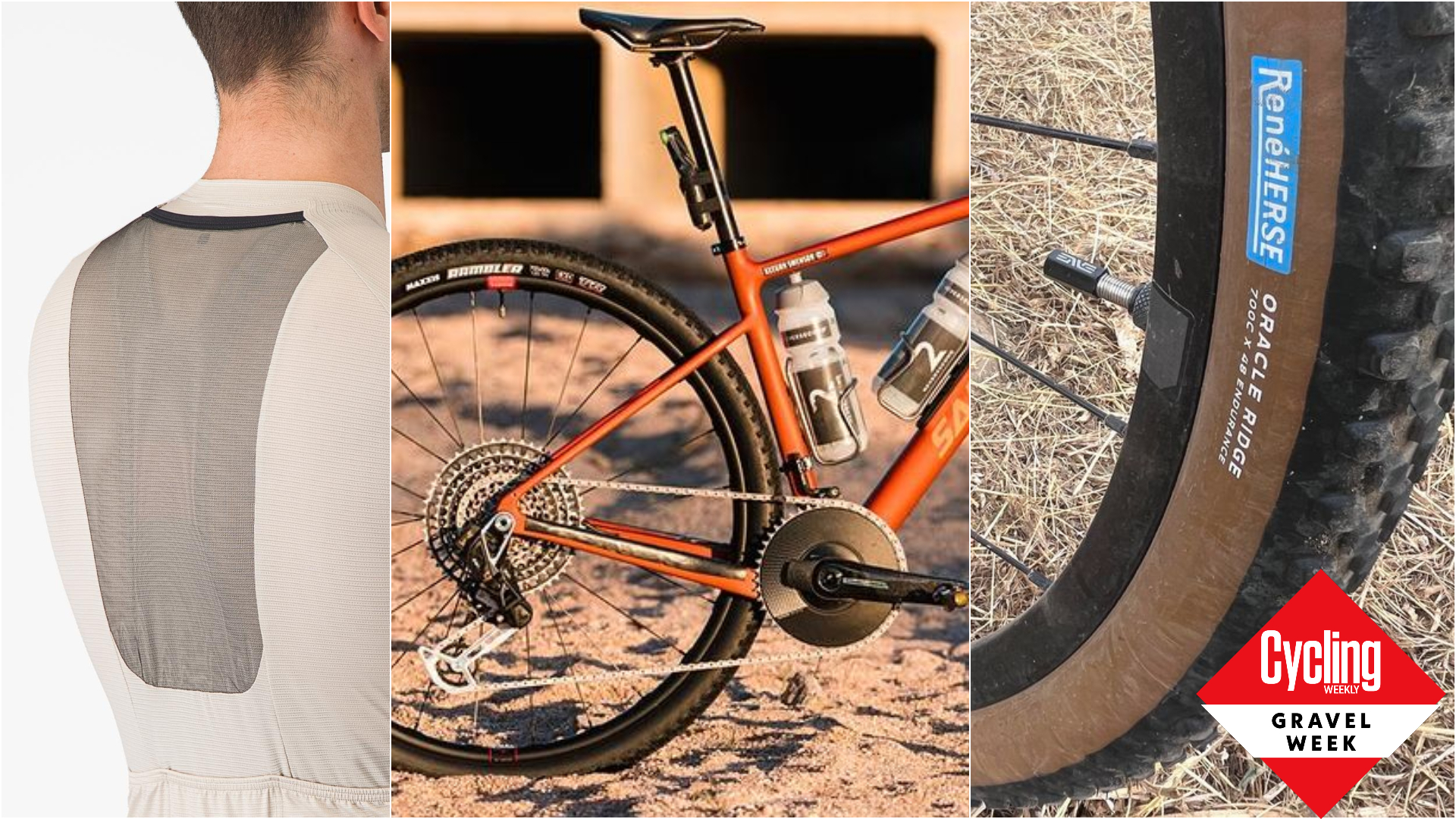
Every year Unbound Gravel gets bigger and the fields get strong. Parallel to that growth is the technological pursuits of the racers and companies that are trying to crack the code of one of the trickiest technological tests in cycling.
With its potential for disaster around every corner and over every unpredictable rock, Unbound is a test that is equal parts speed and durability. With that balance, every rider looks for an edge to suit their riding style, the course demands, and what they hope to achieve on race day.
Questions like: what are the best tires; what is the right gearing; and, what are the right clothing all remain open for discussion.
Thus, with just a few days to go before the big show, we set out to find this year's answers to those questions across the pro fields at Unbound. With these tech choices filled with prototypes, soon-to-be-released tech, and decisions that could give advantages, we won't name names, but trust us when we say the range of responses was wide.
Tires – bigger across the board
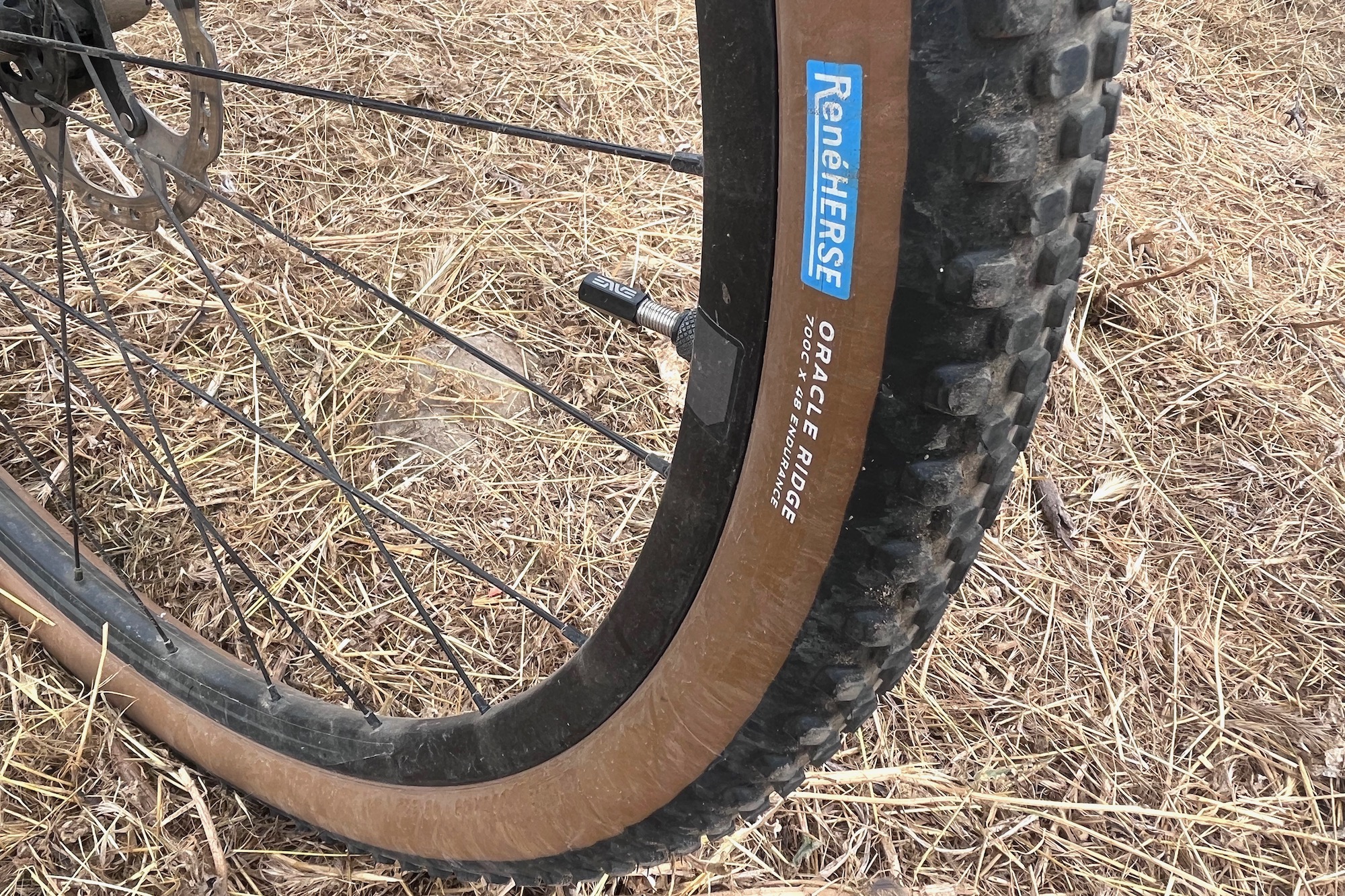
The single biggest change at Unbound this year will be a huge increase in the size of tires amongst the contenders for victory. There were some signs of tire size creeping up last year, but ultimately the mud negated some of those who were ready to go bigger. When it rains like it did in the run-up to the race last year, bigger is certainly not better.
Nevertheless, with a north course that will have less mud and many more rocks, regardless of how much precipitation comes in the leadup into the event, 2024 will see the pivot toward big tires reach its climax.
According to our conversation with a range of LifeTime Grand Prix riders heading to Unbound with aspirations, 50mm tires were the most frequent answer when it came to the size of treads riders would be running. Some remained below the 50mm threshold, including one of the most well-established gravel pros, Ted King, returning to his tried and true setup of a 44mm slick tire with a durable casing.
A good sign of what is coming to the gravel world is Payson McElveen’s choice to run Maxxis 2.25 Aspen mountain bike tires at the recent Rule of Three bike race in the similarly chunky terrain of Northwest Arkansas. McElveen, who is sponsored by Allied, was riding an unreleased version of the Able as the previous iteration couldn’t hold more than a 45mm tire in the rear. With the new bike and the choice to go with a big but very fast cross-country tire, his choice in setup is representative of many of the broader trends that we see heading into Unbound.
Nevertheless, don’t expect to see a bunch of mountain bike treads on the start line. Alex Howes is sponsored not by a tire company but instead by a company that sells a wide collection of tires -- Bike Tires Direct. He offered a great explanation of what he was looking at for Unbound which was gravel tires around 50mm in width but with very shallow tread patterns. This allows riders to ride big rubber while collecting less mud and also avoiding cuts from tricks that might be snagged by an elevated rubber knob.
Tire inserts – on the way out
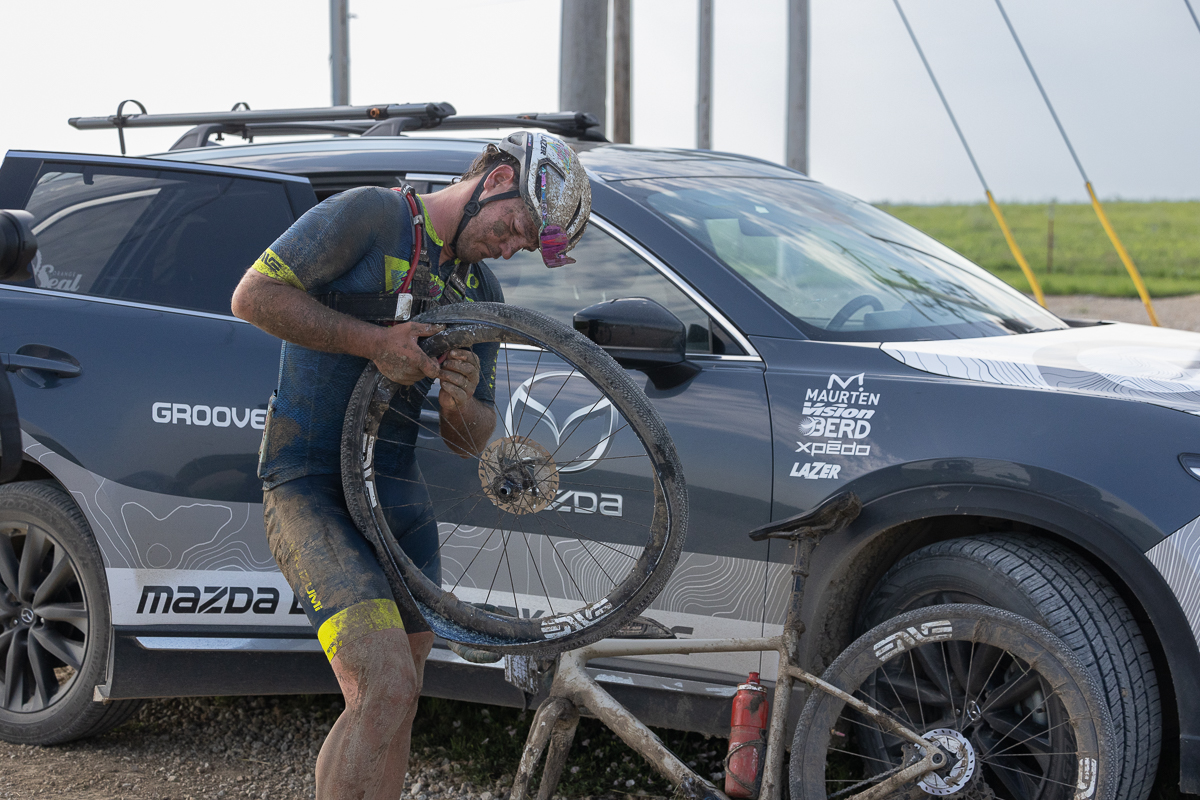
In step with the evolution of tire size is the shifting opinion on tire inserts. At Unbound in recent years, tire inserts have been touted as a key for any rider to get through the race with fewer punctures.
Tire inserts were first popularized on mountain bike tires and essentially allow riders to run lower pressure without the same risk of flat tires which come from from rocks pinching the tread of the tire against the rim. When running a 38-42 mm tire on gravel especially, the impacts from the sharp, big gravel you see in the Flint Hills can be mitigated by a combination of the insert and low pressure, in theory.
In practice, however, the results are mixed. Engineers of both tires and wheels have raised questions about the effectiveness of inserts as they do change the nature of how a tire interacts with the ground it rolls over, while riders have anecdotal seen enough flats with inserts to be more hesitant to wrestle the inserts onto their rims.
The change in the opinion around inserts revolves around the nature of gravel tires compared to road or mountain bike treads. Gravel tires work by offering a platform for the rider that contours to the uneven surface beneath the tread. One of the key characteristics of effective gravel tires to gain that traction is the tire’s ability to deform around some of the larger objects via a “supple” sidewall that can flex and compress underneath the most durable rubber casing in the middle of the tire.
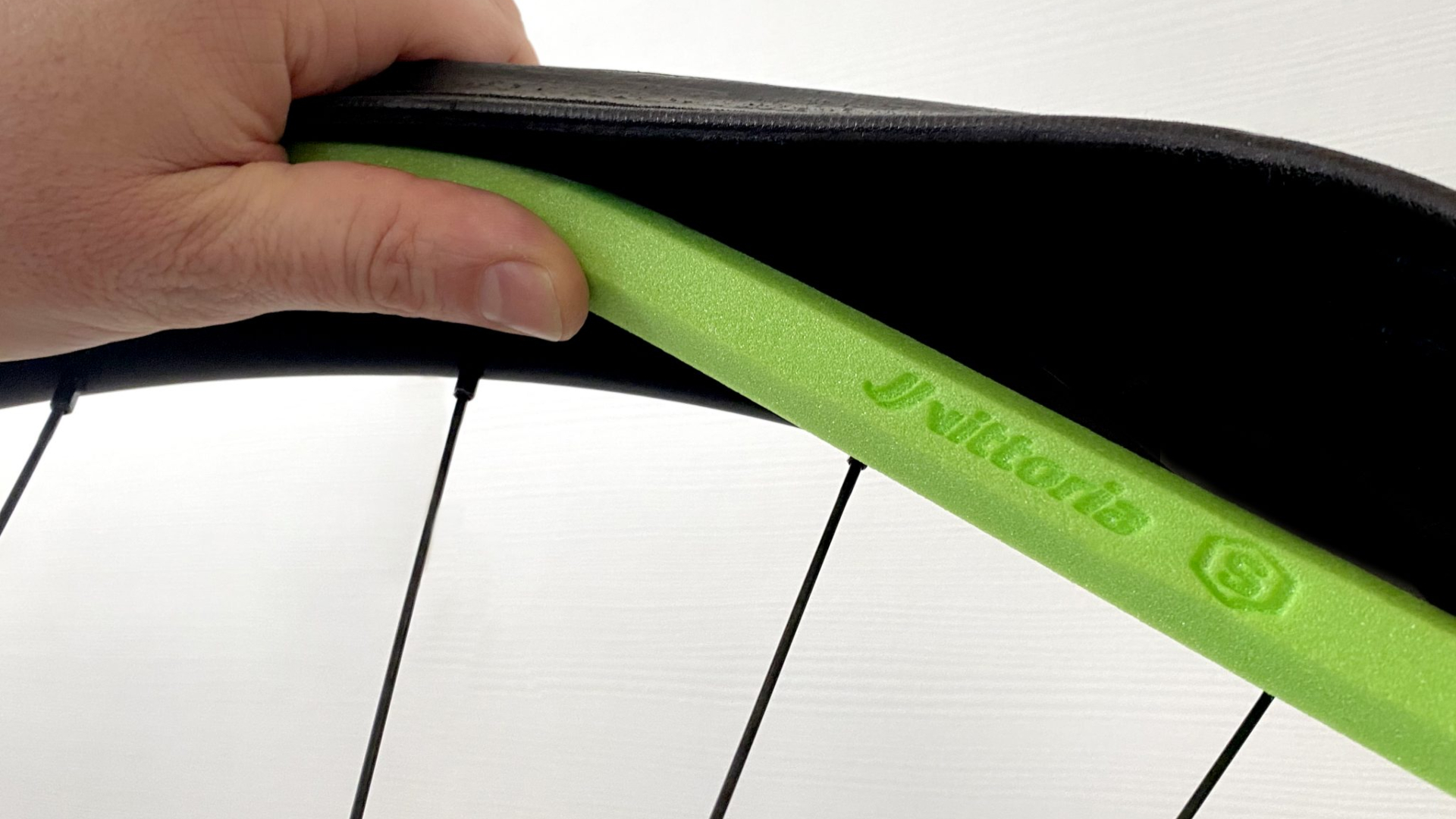
Inserts change the way that the sidewall can move, with the density of the form reducing the amount of air in the tire. While this does allow lower pressures in a smaller tire, air is more compressible than foam which means the tire won't be able to stretch or deform in the way it was developed to. Without having the same pliability in the sidewall, the tire is exposed to more cuts on the sidewall which are some of the most disastrous flat tires a rider could have and are a common occurrence amongst the sharp rocks around Emporia.
What's more, with big 50mm plus tires, the volume of air changes the likelihood of a pinch flat, and should give most of the riders the confidence to leave the inserts at home. However, should it rain as much as predicted, tire inserts and 40-42mm tires might be back on the menu as tire clearance becomes a huge variable to success on the day.
Gearing – single big rings are in
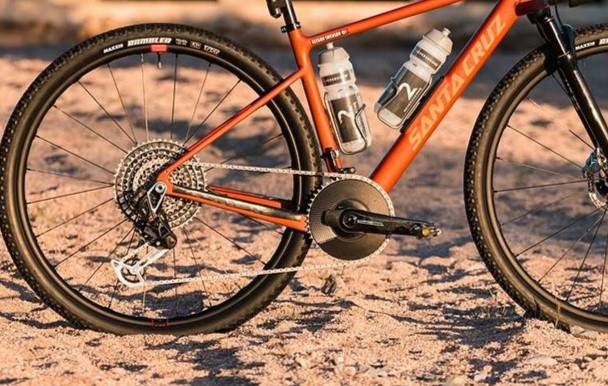
At Unbound tires are the obvious starting point of any tech discussion. However, gearing should be a close second as small tweaks and decisions around one's drive-train can make huge differences over 200 miles of racing.
With that huge distance to consider, any added efficiency that could seem marginal for other races becomes huge in Kansas. Additionally, because drive-train efficiency is greatly impacted by grit and grime, anything to reduce friction will also be compounded over time as riders' chains will only get messier as the day goes on. Taking those perimeters into consideration, riders on the elite side of the race are looking at bigger chainrings and 1x setups as effective tools for reducing the ability for mud to get in the way of shifting and, perhaps most importantly, allowing for straighter chain lines throughout the race.
On the men’s side, this means 48-50t chainrings have replaced the 46t chainrings of old, while the women will have more 48t chainrings at the startline as well for those riding either the SRAM 1x drivetrains or the Shimano GRX mechanical setup. With Shimano rolling out its new GRX di2 drivetrain recently, there will still be a strong representation of 2x at Unbound. However, with the chaos of the mud fresh in everyone’s minds the simplicity of the 1x setup will be popular regardless of what groupset a rider is sponsored by.
Ultimately, the move to bigger chainrings as the speed of these races seems natural. The more interesting question is how big one can go as time trial tech and testing in the WorldTour have shown how effective big chainrings can be. Even though WorldTour time trials and Unbound seem to be the two opposite ends of the spectrum, the lessons are transferable.
While sections like Little Egypt and the punchy climbs heading into the final aid station at Council Grove demand an easy gear, those sections make up a much smaller portion of the course to the stretches of gravel where the elites will be in the 20-30 mph range where a 50t or even a 52t chainring offer a chain line with significantly higher efficiency. It's hard to say what the exact watts saving would be given all the separate variables, but comparing a 46t chainring to a 52t chainring could see the larger option gaining 2-4 watts of efficiency gains throughout the race. While that seems small on paper, over 200 miles the difference could be massive.
Clothing – balancing hydration and speed
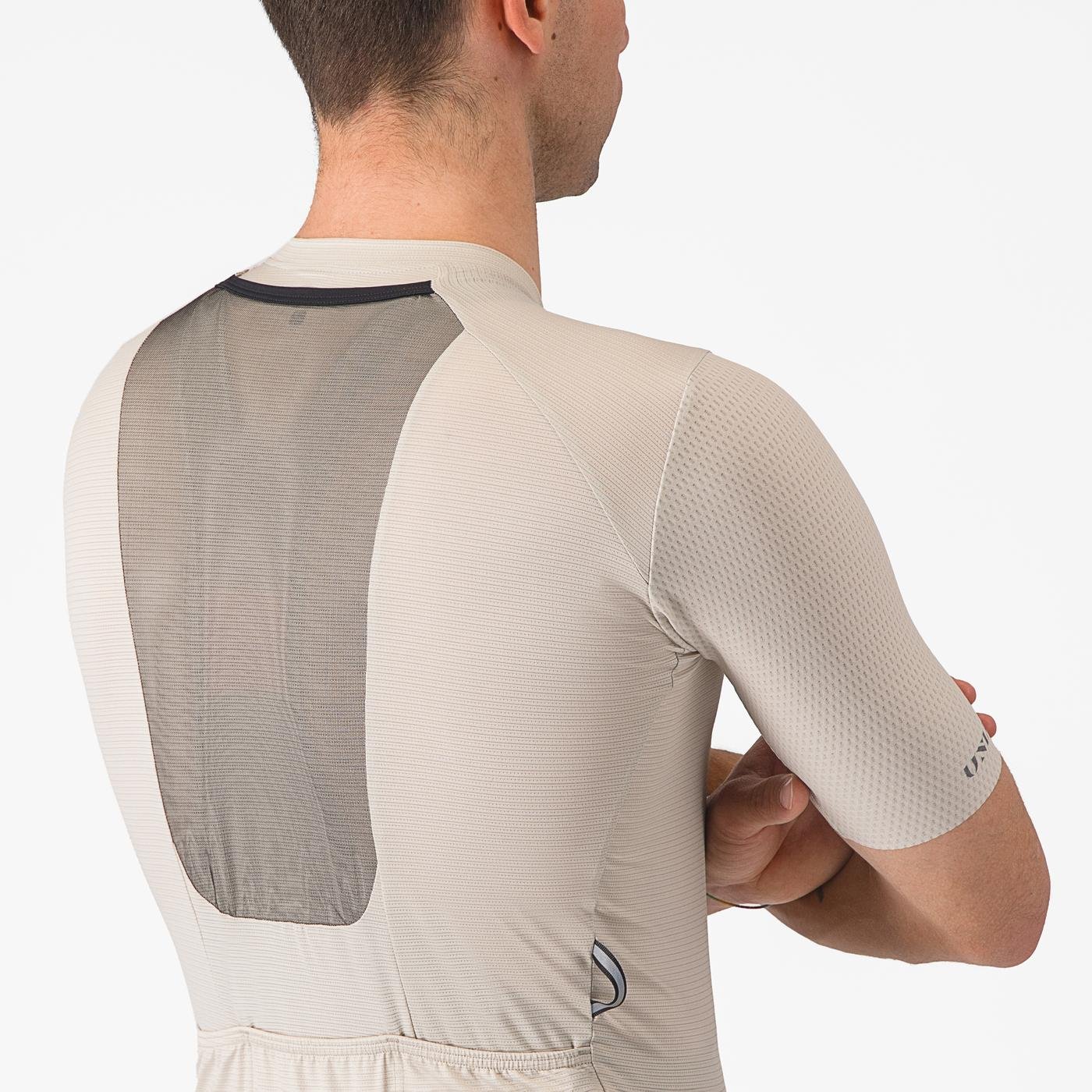
The last big piece of the puzzle of Unbound tech success is the clothing a rider wears and specifically how one can effectively fuel while remaining aerodynamic.
With the race retaining elements of its self-supported origins, riders are required to go over 50 miles between aid stations where they can replenish food and liquids. This has caused the proliferation of hydration packs across the competitive spectrum at Unbound. The added carrying capacity for both food and hydration is essential for all riders. However, for the front of the race, it is a wonky piece of equipment that reduces a rider's aerodynamics and the elite field has been looking at ways to change that calculus year after year.
In 2024, some of the biggest cycling clothing brands are lending their expertise to build a kit that suits those specific needs.
Castelli is the first brand to release its Unbound kit over the weekend with a jersey complete with a built-in sleeve for a hydration bladder and a strap to hold the hose sewed into the lightweight jersey. The kit was shown off by Ben Delaney, a cycling journalist who is sponsored by Castelli, and is truly the first of its kind to be built around the hyper-specific needs of gravel races like Unbound.
The jersey is not exactly revolutionary as riders have been sewing bladders into jerseys for a few years now, but it is the first official offering from one of the big clothing brands.
It is also probably not going to be the last bespoke kit released for Unbound as rumblings of specific kit from other top brands who partner with top gravel riders have been kicking around as well. While the details remain under lock and key, Castelli’s offering of a race-style jersey with a dedicated space for a bladder will be replicated again by other companies as riders and brands alike look to marry the aerodynamic and hydration needs of gravel racing as the sport continues to grow and refine itself.







